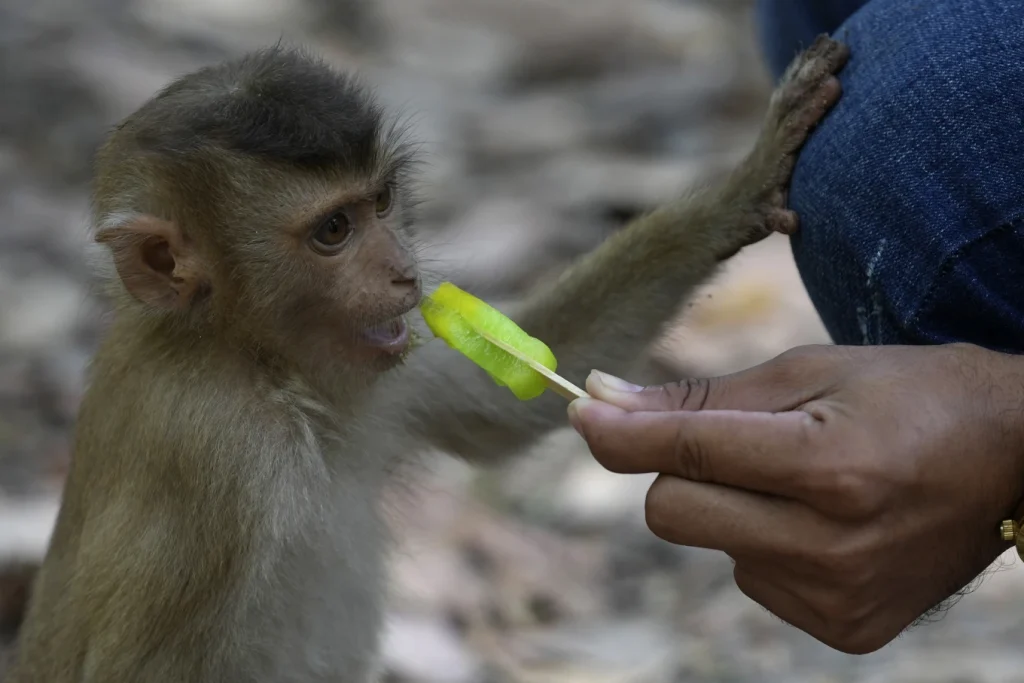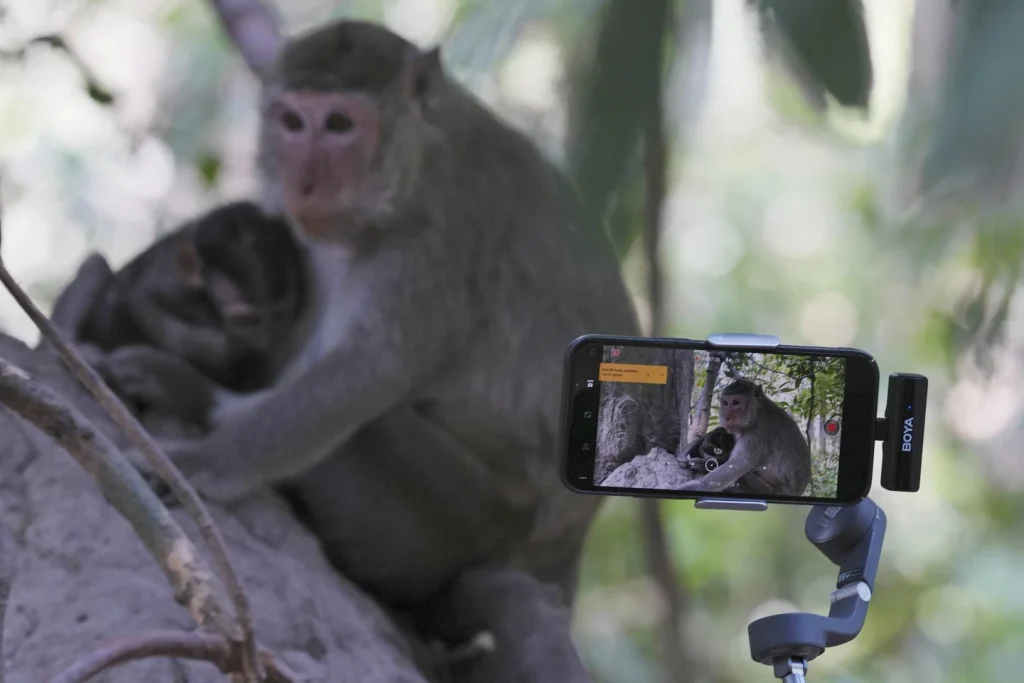The mistreatment of monkeys at the Angkor UNESCO World Heritage Site in Cambodia has become a concerning issue that is gaining traction.
The disturbing videos circulating online show the abuse of these animals for the sake of generating views and cash.
From forcibly dousing a baby monkey with water to playing with a juvenile male macaque’s genitals for the camera, these acts of cruelty are not only unethical but also illegal.
The spokesperson for APSARA, the Cambodian office responsible for overseeing the Angkor archaeological site, Long Kosal, expressed his dismay at the mistreatment of these monkeys.
He highlighted that monkeys should be living in their natural habitat, not as domestic pets or objects of exploitation for online content. The fact that people are using these animals for financial gain is a grave concern for authorities in Cambodia.
While APSARA is limited in its ability to stop YouTubers from filming at the site, they have initiated an investigation in collaboration with the Ministry of Agriculture to gather evidence against the most egregious offenders.

Long Kosal emphasized that animal abusers will face serious legal consequences in Cambodia, should a case be built against them.
Although platforms like YouTube and Facebook remove videos with graphic content, there are still numerous clips of monkeys being exploited for entertainment purposes that continue to circulate online.
These videos, often portraying monkeys in a cute and playful light, attract thousands of views and subscribers, perpetuating the cycle of exploitation.
The close interaction between YouTubers and the monkeys at the Angkor site poses a myriad of issues, both for the animals and for visitors to the popular tourist destination.
The constant presence of individuals seeking to capture footage of the monkeys can disrupt their natural behavior and create stress for the animals. Additionally, the potential for disease transmission between humans and monkeys is a significant concern.
It is imperative that steps are taken to address the mistreatment of monkeys at the Angkor site and to ensure their well-being and protection.
The authorities in Cambodia must enforce strict regulations to prevent further exploitation of these animals for online content.
Education and awareness campaigns can also play a crucial role in promoting responsible tourism practices and fostering a culture of respect for wildlife.
In conclusion, the abuse of monkeys at the Angkor UNESCO World Heritage Site in Cambodia is a serious issue that demands immediate attention and action.
It is essential to prioritize the welfare of these animals and to hold accountable those who engage in acts of cruelty towards them.

By working together to combat this problem, we can create a more sustainable and ethical environment for both the monkeys and the visitors to this historic site.
The issue of monkeys being fed and filmed by tourists at Angkor Wat poses a complex dilemma that intertwines human behavior, wildlife conservation, and ethical considerations.
The interactions between tourists and monkeys in this historical site have raised concerns about the welfare of the animals, the impact on the ecosystem, and the ethical implications of exploiting wildlife for entertainment and financial gain.
The presence of monkeys in tourist areas is not uncommon, and their behavior is often influenced by human activities such as feeding.
While capturing videos of these animals may seem harmless on the surface, it perpetuates a cycle of dependency on handouts and encourages aggressive behavior towards humans.
The monkeys, drawn by the prospect of food, venture into the temple sites, causing damage to the ancient structures and posing risks to both themselves and visitors.
Tourists, eager to capture memorable moments, sometimes overlook the potential harm caused by their actions. Despite warnings from guides about the dangers of feeding monkeys, some individuals continue to offer food in exchange for close encounters and photo opportunities.
This behavior blurs the line between natural interactions and human intervention, raising questions about the ethical boundaries of wildlife tourism.
Content creators, including YouTubers, have capitalized on the popularity of videos featuring monkeys, often using food as an incentive to attract the animals for filming.
While some justify their actions as a means of earning a living or supplementing their income, others express concern about the long-term consequences of exploiting wildlife for profit.
The financial incentives associated with creating such content present a challenge for authorities tasked with regulating and monitoring these activities.
Efforts to address the issue of monkey exploitation at Angkor Wat face obstacles such as identifying and penalizing individuals involved in the physical abuse of the animals.
Conservationists emphasize the need for collective action to discourage the production and consumption of videos that perpetuate harmful practices towards wildlife.
By raising awareness and promoting responsible tourism practices, stakeholders can work towards mitigating the negative impact on the monkeys and their natural habitat.

In conclusion, the case of monkeys at Angkor Wat highlights the intricate relationship between human behavior, wildlife conservation, and ethical considerations in tourism settings.
Balancing the interests of visitors, local communities, and wildlife requires a collaborative approach that prioritizes the well-being of the animals and the preservation of the environment.
By fostering a culture of respect for nature and promoting sustainable tourism practices, we can strive towards a harmonious coexistence between humans and wildlife in heritage sites like Angkor Wat.

